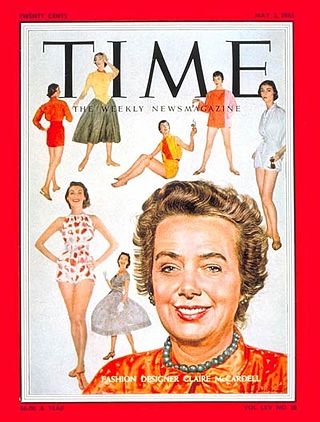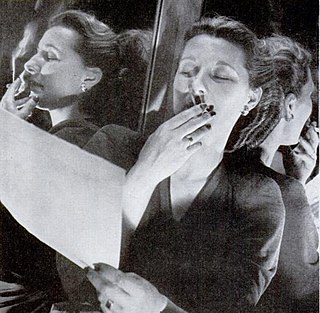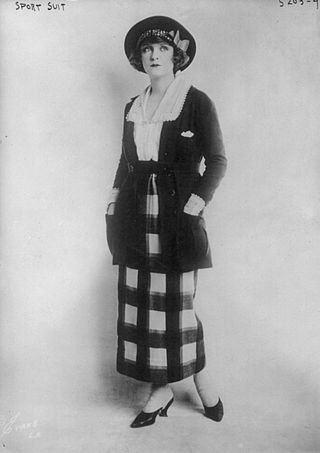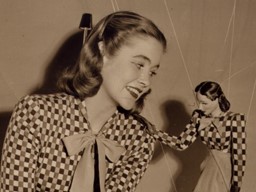
Donna Karan, also known as DK, is an American fashion designer and the creator of the Donna Karan New York and DKNY clothing labels.
Willi Donnell Smith was an American fashion designer. At the time of his death, Smith was regarded as one of the most successful African-American designers in the fashion industry. His company, WilliWear Limited, launched in 1976 and by 1986 grossed over $25 million in sales. After Smith's death, his business partner, Laurie Mallet, continued the line with various designers creating collections. Without Smith, the company floundered and due to financial problems and poor sales, WilliWear Limited ceased production in 1990. WilliWear was the first clothing company to create womenswear and menswear under the same label. The accessibility and affordability of Smith's clothing helped to democratize fashion.
Adrienne is the French feminine form of the male name Adrien. Its meaning is literally "from the city Hadria."

Donald Brooks was an American fashion designer and creator of the "American Look" founded in the 1950s and 1960s. He had an immense passion for stage and film, designing well over 3500 costumes. His efforts were recognized by an Emmy Award and numerous other honors; he was also nominated three times for the Academy Award and once for a Tony.

Claire McCardell was an American fashion designer of ready-to-wear clothing in the twentieth century. She is credited with the creation of American sportswear.
Anne Klein was an American fashion designer and businesswoman, a founder and namesake of Anne Klein & Company.
Bonnie Cashin was an American fashion designer. Considered a pioneer in the design of American sportswear, she created innovative, uncomplicated clothing that catered to the modern, independent woman beginning in the post-war era through to her retirement from the fashion world in 1985.

Vera Huppe Maxwell was an American pioneering sportswear and fashion designer.

Clare Potter was a fashion designer who was born in Jersey City, New Jersey in 1903. In the 1930s she was one of the first American fashion designers to be promoted as an individual design talent. Working under her elided name Clarepotter, she has been credited as one of the inventors of American sportswear. Based in Manhattan, she continued designing through the 1940s and 1950s. Her clothes were renowned for being elegant, but easy-to-wear and relaxed, and for their distinctive use of colour. She founded a ready-to-wear fashion company in Manhattan named Timbertop in 1948, and in the 1960s she also established a wholesale company to manufacture fashions. Potter was one of the 17 women gathered together by Edna Woolman Chase, editor-in-chief of Vogue to form the Fashion Group International, Inc., in 1928.

Sportswear is an American fashion term originally used to describe separates, but which since the 1930s has come to be applied to day and evening fashions of varying degrees of formality that demonstrate a specific relaxed approach to their design, while remaining appropriate for a wide range of social occasions. The term is not necessarily synonymous with activewear, clothing designed specifically for participants in sporting pursuits. Although sports clothing was available from European haute couture houses and "sporty" garments were increasingly worn as everyday or informal wear, the early American sportswear designers were associated with ready-to-wear manufacturers. While most fashions in America in the early 20th century were directly copied from, or influenced heavily by Paris, American sportswear became a home-grown exception to this rule, and could be described as the American Look. Sportswear was designed to be easy to look after, with accessible fastenings that enabled a modern emancipated woman to dress herself without a maid's assistance.

Anne Fogarty was an American fashion designer, active 1940–1980, who was noted for her understated, ladylike designs that were accessible to American women on a limited income. She started out as a model in New York in 1939, working for Harvey Berin on Seventh Avenue, before studying fashion design. She eventually secured a full-time design job in 1948, and became well-known for full-skirted designs with fitted bodices, inspired by Dior's New Look.
Adolfo Faustino Sardiña, professionally known as Adolfo, was a Cuban-born American fashion designer who started out as a milliner in the 1950s. While chief designer for the wholesale milliners Emme, he won the Coty Award and the Neiman Marcus Fashion Award. In 1963 he set up his own salon in New York, firstly as a milliner, and then focusing on clothing. He retired from fashion design in 1993.

Emily Wilkens was an American fashion designer specializing in children's wear. She won both the Neiman Marcus Fashion Award and the Coty Award for her work, which was considered groundbreaking for properly taking note of the requirements of teenage dressing, and not simply offering miniature grown-up garments. She was also an author, writing a number of books on self care and style, and during the late 1960s and early 1970s, became a beauty journalist, writing an advice column.
Carolyn Schnurer was a fashion designer and a pioneer in American sportswear. Schnurer's designs have been featured in the magazines Vogue, Harper's Bazaar, and Life as well as in the Metropolitan Museum of Art. She has also received awards for her designs from Coty, The Cotton Council, International Sportswear, Miami Sportswear, and Boston Sportswear.

Louella Ballerino was an American fashion designer, best known for her work in sportswear.
Sydney Wragge (1908–1978) was an American fashion designer active during the 1940s, 1950s and 1960s. Working as B.H. Wragge, he was particularly renowned for his American sportswear, with the historian Caroline Rennolds Milbank declaring him the leader in mix-and-match separates and interchangeable wardrobe design.
William "Bill" Atkinson (1916-1995) was an American architect and fashion designer working in the American sportswear style.

Joan Vass (1925-2011) was an American knitwear designer and founder of the company bearing her name.
Lydia de Crescenzo was an Italian fashion designer known as Lydia de Roma, specialising in sportswear.
Jeanne S. Campbell (1919–2002) was an American fashion designer active from the 1940s to the 1970s. She was part of the American sportswear movement alongside Bonnie Cashin and Claire McCardell.










